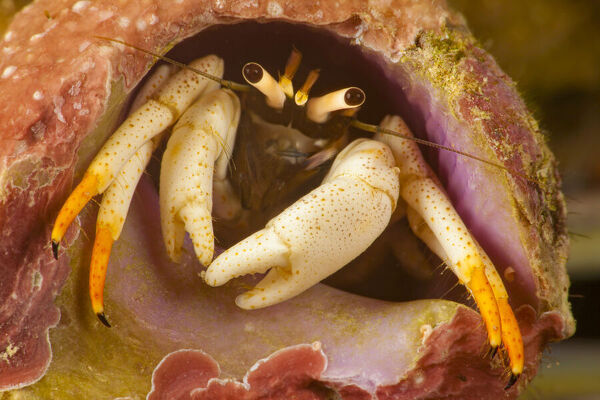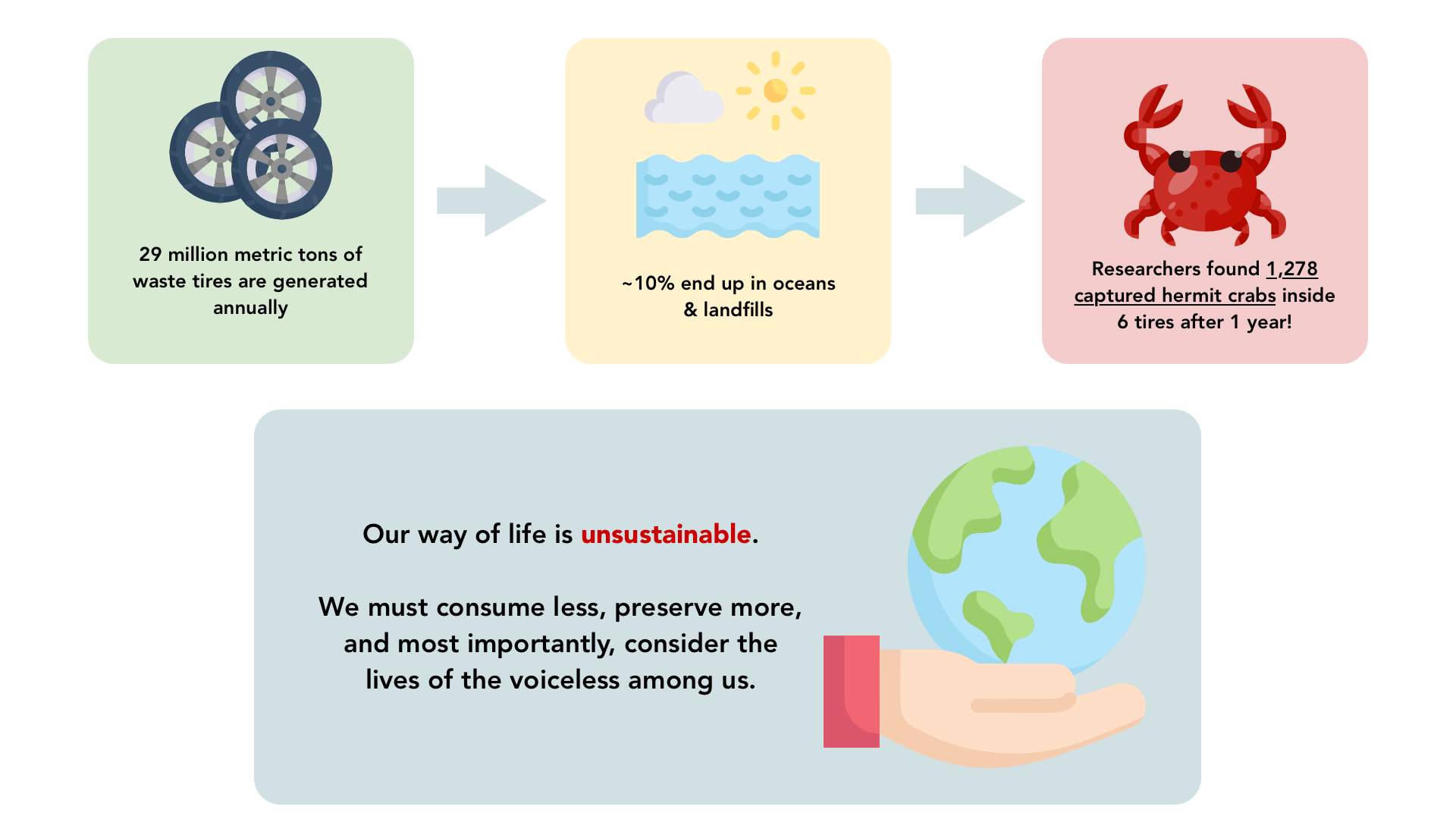Car Tires: The Hermit Crabs’ Chicxulub?
November 10th, 2021
Meet P. minutus, the king crustacean of the seas! Well, not really, but these hermit crabs are key coastal ecosystem engineers and bottom-feeders. Alongside their buddies, P. ortmanni and P. lanuginosus., they’re facing an existential threat because of...car tires?
You’re probably aware of the broader marine trash problem due to successful PR campaigns, with Instagrammable captions like “There will be more plastic than fish in the ocean by 2050!” filling eco-warrior feeds. But did you know that “29 million metric tons of waste [tires] are generated annually” (Sogabe) by the 45 most car-centric countries? While 90% are properly handled, the rest end up in landfills and oceans, upsetting the ecosystems of our little friends.
In the next tragic episode of our continuing climate catastrophe, scientists have recently discovered that the illegal dumping of these car tires in Mutsu Bay, Japan possibly creates death-traps for hermit crabs. Because the concave inner wall of a tire prevents escape, hermit crabs cannibalize themselves or die due to starvation. After observing large masses of crab shells inside wild waste tires, scientists set out to carefully study how these death-traps work. They ran two experiments:
In the field experiment, scientists arranged six car tires at the bottom of the Bay, collecting captured hermit crabs monthly from October 2015 to September 2016. Then, they measured body size and organized by species. And don’t worry, collected crabs were released healthy and well after measurement!
In the aquarium experiment, a tire was placed inside of a plastic tank filled with fresh seawater. Ten hermit crabs of both P. minutus and P. ortmanni were placed outside and inside the tire. After eighteen hours, individual positions were recorded.
Research showed that 1,278 hermit crabs were trapped inside the six tires over the course of the year, with body size having no impact on chance of capture. That’s a small town population! In addition, they could not escape in the eighteen-hour period of observation. Even though escape is technically possible, the lack of footholds on the inner tire make it unlikely. Besides, car tires break down at slow rates, meaning that starvation occurs long before enough decay takes places to allow for escape.
Extend these findings across the vast number of tires that span the ocean. Car tires are to hermit crabs what Chicxulub, the meteor that smashed into Earth, is to dinosaurs—a threat to their very existence.
While on a small scale, this is an issue affecting one species and recorded in one location, it speaks to a broader problem.Our current way of life is simply unsustainable. When we pay such little regard to the lives of the animals that we share this planet with, we risk wiping out precious beauty in the natural world. We may cause unpredictable cascades of collapse. With no hermit crabs, fish have one less food source and the critters that relied on discarded hermit crab shells for their homes now become homeless.
It is the responsibility of every single one of us, including you, to be a better steward of this planet. Consume less, preserve more, and most importantly, consider the lives of the voiceless among us. Consider the lives of the little king crustaceans.
Sources:
Note: I created the infographic using completely open-source, open-license images.
Mediastorehouse. (2021, May 11). Print of flame tip hermit crab (Calcinus minutus), a left-handed hermit crab that is often found. Nature Picture Library Photo Prints. Retrieved November 1, 2021, from https://www.natureplprints.com/may-2021-highlights/flame-tip-hermit-crab-calcinus-minutus-20987788.html.
Sogabe, A., & Takatsuji, K. (2021). Marine-dumped waste tyres cause the ghost fishing of hermit crabs. Royal Society Open Science, 8(10). https://doi.org/10.1098/ rsos.210166